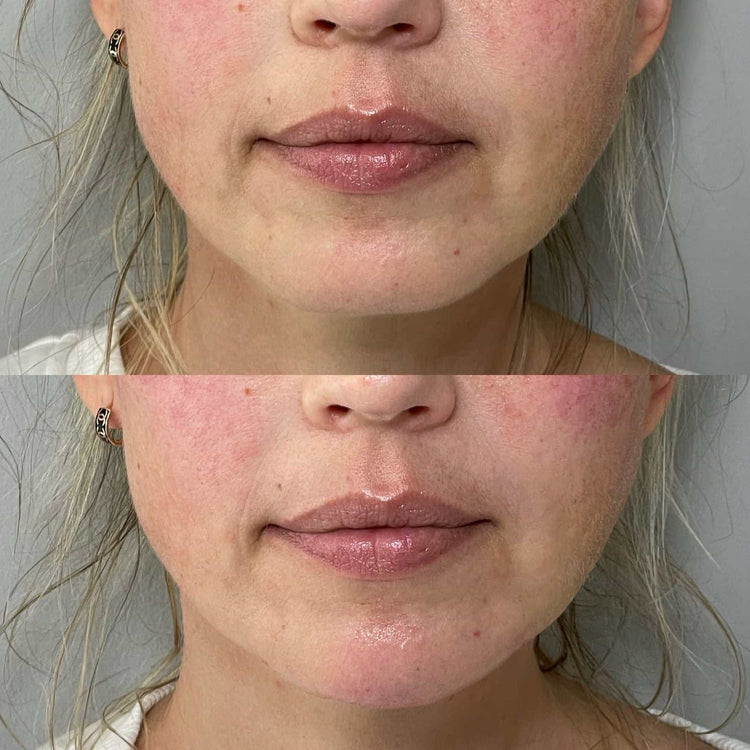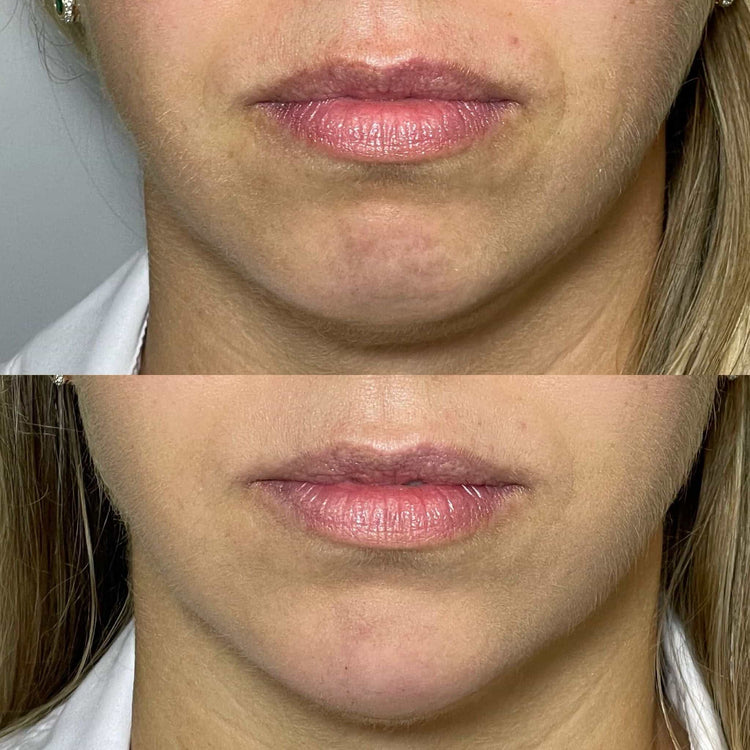What Is The Ideal Age For Considering Chin Crease Fillers
Age-Related Chin Crease Development
As we age, our skin naturally loses collagen and elasticity, leading to various changes in facial appearance. One noticeable change is the development of a chin crease, also known as a “necklace line,” which appears as a vertical wrinkle running from the base of the chin to the neck.
Chin Creases and Facial Aging
Chin creases are a common sign of aging that can be attributed to the loss of skin volume and elasticity over time. As collagen and elastin production declines, the skin thins and loses its ability to bounce back, resulting in wrinkles and folds.
While individual experiences vary, many people start noticing chin creases appearing in their 30s or 40s.
Factors such as genetics, sun exposure, and smoking can accelerate the development of these creases.
The best time to consider chin crease fillers is when you feel self-conscious about the appearance of the creases and desire a smoother, more youthful facial profile.
Factors Influencing Chin Crease Appearance
There isn’t a definitive “ideal” age to consider chin crease fillers as it’s a personal decision based on individual preferences and concerns.
Some people may choose to address the creases earlier if they are self-conscious about their appearance, while others may prefer to wait until they are more prominent. It’s important to consult with a qualified healthcare professional who can assess your individual situation and discuss the potential benefits and risks of treatment.
Ideal Age for Filler Consideration
As we age, our skin naturally changes, leading to visible signs like chin creases, also known as “necklace lines.” These vertical wrinkles appear on the jawline and extend towards the neck, becoming more pronounced with time. While individual aging patterns vary, many people start noticing these creases in their 30s or 40s due to a decline in collagen and elastin production, leading to thinner skin and reduced elasticity.
Early Signs of Chin Creases
As we age, our skin naturally loses collagen and elasticity, leading to various changes in facial appearance. One noticeable change is the development of a chin crease, also known as a “necklace line,” which appears as a vertical wrinkle running from the base of the chin to the neck. Chin creases are a common sign of aging that can be attributed to the loss of skin volume and elasticity over time. As collagen and elastin production declines, the skin thins and loses its ability to bounce back, resulting in wrinkles and folds. While individual experiences vary, many people start noticing chin creases appearing in their 30s or 40s. Factors such as genetics, sun exposure, and smoking can accelerate the development of these creases.
The best time to consider chin crease fillers is when you feel self-conscious about the appearance of the creases and desire a smoother, more youthful facial profile. There isn’t a definitive “ideal” age to consider chin crease fillers as it’s a personal decision based on individual preferences and concerns. Some people may choose to address the creases earlier if they are self-conscious about their appearance, while others may prefer to wait until they are more prominent. It’s important to consult with a qualified healthcare professional who can assess your individual situation and discuss the potential benefits and risks of treatment.
Signs of Significant Wrinkles
Signs of significant wrinkles that might prompt consideration of chin crease fillers include deep, noticeable vertical lines extending from the base of the chin to the neck. These creases should be prominent enough to impact an individual’s self-confidence or facial aesthetics.
When considering fillers, it’s essential to remember that this is a personal decision influenced by factors like self-perception and desired outcome rather than a fixed age.
Individual Factors to Consider
Several individual factors should be considered when deciding if chin crease fillers are right for you. These include your current appearance, personal comfort levels with aging, lifestyle factors, and medical history.
Skin Elasticity
Age is just one factor to consider when determining if chin crease fillers are right for you. Individual skin elasticity plays a significant role. People with naturally more elastic skin may experience less prominent creases as they age and could delay filler treatment. Conversely, individuals with thinner or less elastic skin might see more pronounced creases earlier and might benefit from fillers sooner.
Other factors to consider include your overall health, any existing medical conditions, and potential allergies or sensitivities to the filler materials. Consulting with a qualified healthcare professional who specializes in aesthetic treatments is crucial to make an informed decision about whether chin crease fillers are appropriate for you.
Lifestyle Choices
Individual Factors to Consider
Several individual factors should be considered when deciding if chin crease fillers are right for you. These include your current appearance, personal comfort levels with aging, lifestyle factors, and medical history.
Age is just one factor to consider when determining if chin crease fillers are right for you. Individual skin elasticity plays a significant role. People with naturally more elastic skin may experience less prominent creases as they age and could delay filler treatment. Conversely, individuals with thinner or less elastic skin might see more pronounced creases earlier and might benefit from fillers sooner. Other factors to consider include your overall health, any existing medical conditions, and potential allergies or sensitivities to the filler materials.
Health Conditions
Several individual factors should be considered when deciding if chin crease fillers are right for you. These include your current appearance, personal comfort levels with aging, lifestyle factors, and medical history.
Age is just one factor to consider when determining if chin crease fillers are right for you. Individual skin elasticity plays a significant role. People with naturally more elastic skin may experience less prominent creases as they age and could delay filler treatment. Conversely, individuals with thinner or less elastic skin might see more pronounced creases earlier and might benefit from fillers sooner.
Other factors to consider include your overall health, any existing medical conditions, and potential allergies or sensitivities to the filler materials.
Consultation with a Medical Professional
As we age, our skin naturally undergoes changes, leading to visible signs like chin creases, also known as “necklace lines.” These vertical wrinkles appear on the jawline and extend towards the neck, becoming more pronounced with time. While individual aging patterns vary, many people begin noticing these creases in their 30s or 40s due to a decline in collagen and elastin production, resulting in thinner skin and reduced elasticity.
Assessing Individual Needs
As we age, our skin naturally undergoes changes, leading to visible signs like chin creases, also known as “necklace lines.” These vertical wrinkles appear on the jawline and extend towards the neck, becoming more pronounced with time. While individual aging patterns vary, many people begin noticing these creases in their 30s or 40s due to a decline in collagen and elastin production, resulting in thinner skin and reduced elasticity.
The best time to consider chin crease fillers is when you feel self-conscious about the appearance of the creases and desire a smoother, more youthful facial profile. There isn’t a definitive “ideal” age to consider chin crease fillers as it’s a personal decision based on individual preferences and concerns. Some people may choose to address the creases earlier if they are self-conscious about their appearance, while others may prefer to wait until they are more prominent. It’s important to consult with a qualified healthcare professional who can assess your individual situation and discuss the potential benefits and risks of treatment.

Several individual factors should be considered when deciding if chin crease fillers are right for you. These include your current appearance, personal comfort levels with aging, lifestyle factors, and medical history.
Age is just one factor to consider when determining if chin crease fillers are right for you. Individual skin elasticity plays a significant role. People with naturally more elastic skin may experience less prominent creases as they age and could delay filler treatment. Conversely, individuals with thinner or less elastic skin might see more pronounced creases earlier and might benefit from fillers sooner.
Other factors to consider include your overall health, any existing medical conditions, and potential allergies or sensitivities to the filler materials. Consulting with a qualified healthcare professional who specializes in aesthetic treatments is crucial to make an informed decision about whether chin crease fillers are appropriate for you.
Discussing Treatment Options

As we age, our skin naturally undergoes changes, leading to visible signs like chin creases, also known as “necklace lines.” These vertical wrinkles appear on the jawline and extend towards the neck, becoming more pronounced with time. While individual aging patterns vary, many people begin noticing these creases in their 30s or 40s due to a decline in collagen and elastin production, resulting in thinner skin and reduced elasticity.
The best time to consider chin crease fillers is when you feel self-conscious about the appearance of the creases and desire a smoother, more youthful facial profile. There isn’t a definitive “ideal” age to consider chin crease fillers as it’s a personal decision based on individual preferences and concerns. Some people may choose to address the creases earlier if they are self-conscious about their appearance, while others may prefer to wait until they are more prominent. It’s important to consult with a qualified healthcare professional who can assess your individual situation and discuss the potential benefits and risks of treatment.
Several individual factors should be considered when deciding if chin crease fillers are right for you. These include your current appearance, personal comfort levels with aging, lifestyle factors, and medical history. Age is just one factor to consider when determining if chin crease fillers are right for you. Individual skin elasticity plays a significant role. People with naturally more elastic skin may experience less prominent creases as they age and could delay filler treatment. Conversely, individuals with thinner or less elastic skin might see more pronounced creases earlier and might benefit from fillers sooner. Other factors to consider include your overall health, any existing medical conditions, and potential allergies or sensitivities to the filler materials.
- How Long Does Lip Filler Take To Settle - August 15, 2025
- How Long Does It Take For Kratom Gummies To Work? - August 14, 2025
- How Long Do Results From Traptox Trapezius Botox Treatment Last - August 12, 2025
